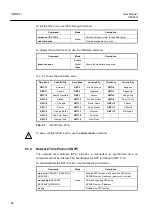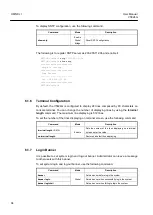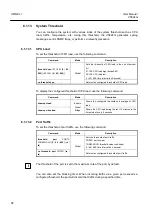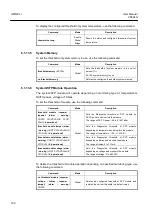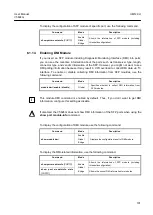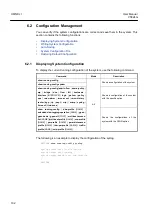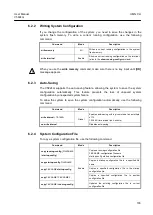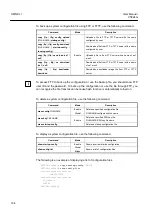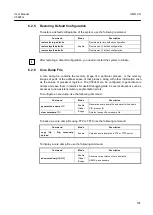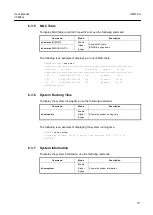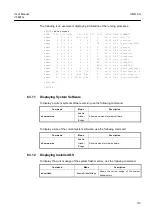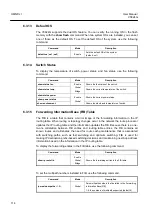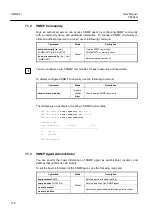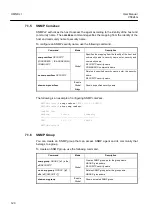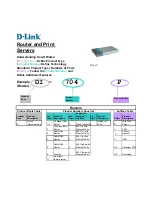
UMN:CLI
User Manual
V5824G
106
6.3
System Management
When there is any problem in the system, you must find what the problem is and its
solution. Therefore, you should not only be aware of a status of the system but also verify
if the system is correctly configured.
This section describes the following functions with CLI command:
•
•
•
•
Displaying User Connecting to System
•
•
•
•
•
•
•
•
•
•
•
•
6.3.1
Network Connection
To verify if your system is correctly connected to the network, use the
ping
command. For
IP network, this command transmits a message to Internet Control Message Protocol
(ICMP). ICMP is an internet protocol that notifies fault situation and provides information
on the location where IP packet is received. When the ICMP echo message is received at
the location, its replying message is returned to the place where it came from. To perform
a ping test to verify network status, use the following command.
Command
Mode
Description
ping
[
A.B.C.D
]
Enable
Performs a ping test to verify network status.
The followings are the available options to perform the
ping
command.
Items
Description
Protocol [ip]
Supports ping test. The default is IP.
Target IP address
Sends ICMP echo message by inputting IP address or host name of
destination in order to verify network status.
Repeat count [5]
Sends ICMP echo message as many as count. The default is 5.
Datagram size [100]
Ping packet size. The default is 100 bytes.
Timeout in seconds [2]
It is considered as successful ping test if reply returns within the
configured time interval. The default is 2 seconds.
Extended commands [n]
Adds the additional options. The default is no.
Tab. 6.2
Options for Ping (Cont.)

